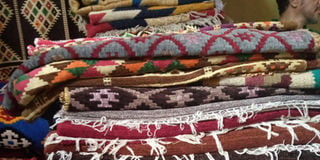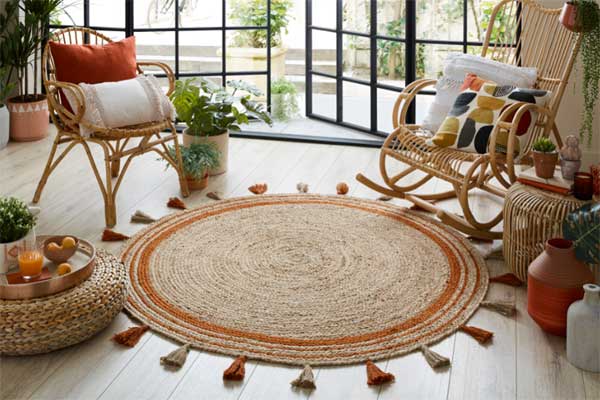Why handmade rugs are a superior choice

What you need to know:
Hand-knotted area rugs are not only a work of art, but are also long-lasting items. Each rug is made by an individual artisan who infuses it with their distinct style and design.
Well-crafted handmade rugs last for generations, appreciate over time and add a luxurious touch to any space. Because they are also the first thing visitors see when they walk into a room, a great rug will leave a lasting impression.
Eriasah Ibrahim, a carpet seller from Egypt, says a lot of care and time go into creating each rug to create quality and unique designs.
The rugs are made from a variety of materials including silk, wool and cotton. Sometimes weavers also use animal skin just to give a royal feel to it. Here is why you should consider handmade rugs for your décor.
Unique quality
Ibrahim says handmade rugs, especially Malmik Egyptian rugs have superior craftsmanship which makes them more durable. A hand-knotted area rug is not only a work of art, but also a long-lasting item.
Each rug is made by an individual artisan who infuses it with their distinct style and design.
“It is hard to find similar handmade rugs. Even if they are from the same artisan, they have slight differences that make them unique. A hand-knotted rug is one-of-a-kind, and it is created on a loom, knot by knot, with materials such as silk, wool, bamboo silk, and cotton. The number of knots per square inch at the back of the rug determines the quality of these rugs, which have a flatter pile. A rug with a higher density of knots per square inch is regarded to be of higher quality,” says Ibrahim.
Paul Tumwesigye, a salesman at Dreamline Furniture, Jinja Road, says although machine-made can mimic the handmade rugs, an expert will tell them apart with just a touch.
He explains, “The handmade ones tend to me softer and gentle to touch. They also have a lot of detailing to them. Looking out for minor uneven stitching tells you that the rug is completely handmade,” he says.

Durable
Handmade oriental rugs are widely regarded as the most durable types of rugs available. Because they do not contain any adhesives or glue, they are washable and will not be affected by a thorough cleaning. Unlike machine-made rugs, the organic fabrics used in handmade rugs do not deteriorate.
Because of the way a handmade rug is made, it can withstand heavy use and traffic for years while still looking brand new. Vintage rugs are made to last and not fray or fall apart. “Because of the absence of artificial chemicals and synthetic fibres, they are perfect for homes that have people with allergies,” Ibrahim says.
Versatility
Handmade rugs have many advantages. Colour, texture, and design combine to create an incredible piece of art that will add a tremendous amount of style to your home, place of business, or any other location. Every square inch of the finished work reflects the painstaking effort invested in it as such it can be used for more than one purpose. In addition to the floor in a home, workplace or place of worship, the rug can also be used as wall art, adding a touch of high style to any space.
“These rugs can be placed in the living room both for flooring and wall hanging, they can be placed as bedroom rugs and kitchen or dining floor accessories as they are definitive of the food selection space or even better as dining top runners,” Ibrahim says.
Cost
Handmade rugs have vastly different prices. Although their value appreciates with time, Tumwesigye says they are relatively affordable.
He says, “The lowest price for tufted carpets is usually between Shs95,000 and Shs160,000 for small-sized ones.” Silk, the most expensive rug material, is glossy and silky smooth.
Eco-friendly
They are also eco-friendly. An artisan creates a hand-knotted area rug out of organic fabric, such as wool dyed with natural vegetables and derived from the backs of sheep. Sheep are not harmed during the shearing process, and they need to be sheared for their own health during the warmer months.
Because of traditional practices such as hand knotting an area rug and sourcing organic fabrics, the creation of a hand-knotted area rug has no negative impact on the environment. Jute, hemp, coir, sisal, mohair, and wool are examples of natural fibers that lend themselves to organic and environmentally friendly products.





